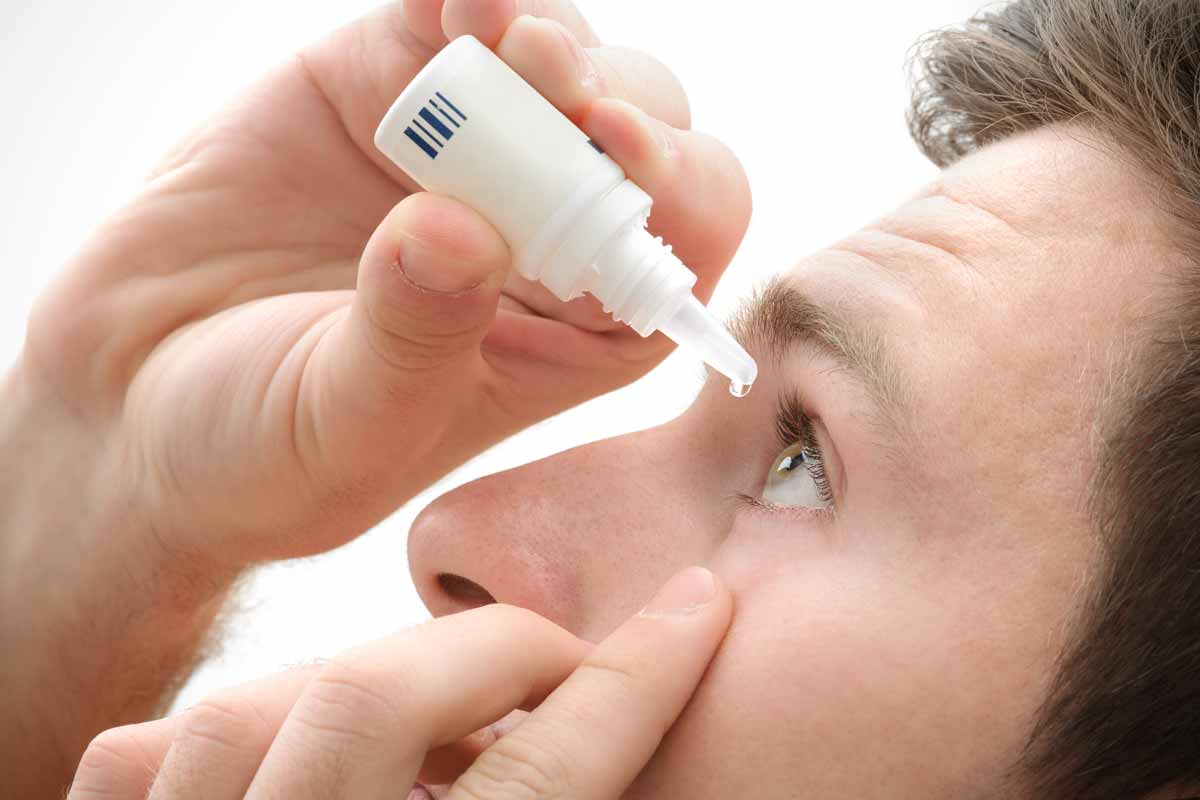Why is It Importance to Continue Eye Drops After Cataract Surgery
After cataract surgery, your doctor will provide a list of instructions to follow to help you heal. Many of the bullet points on that list will concern eye drops. The best drops to use after cataract surgery are those listed on your take-home instructions.
Your doctor is likely to give you prescription eye drops, including some that reduce inflammation and others that combat infection.
Your doctor may give you some leeway in eye drops designed to soothe redness and itching. In general, you should choose products that are free of preservatives and antihistamines, and you might get more relief from gel-based formulations when compared to liquids.
You will heal best when you use your drops properly. That means waiting between doses and ensuring the bottle never touches your eye. You should call your doctor if sudden pain or shifts in your vision happen, as that could be a sign that something has gone wrong with your eyes.
Prescription Eye Drops

During cataract surgery, your doctor makes small cuts in and around your eye. That work happens in sterile conditions, but it's possible that you will leave the operating table with an infection, and your eye may swell. Drops can help to amend both of those problems.
Eye drops are specifically used to protect the eyes from infection, soothe itching, relieve redness and reduce the inflammation associated with the healing process.
Doctors prefer prescription eye drops to over-the-counter products because they not only treat the after-effects from surgery but also help treat any underlying conditions.
Some prescription drops have antibiotics, some have steroids, some are non-steroid and others are designed to combat extra dryness.
Many over-the-counter drops work well during everyday use. Prescription drops, by definition, pack a bit more power. They can make you feel better sooner—and speed up your recovery.
Types of Prescription Drops
Your doctor may give you a prescription for one or more of the following types of drops:
- Steroid drops: These drops treat pain and inflammation. Dexamethasone is a commonly prescribed generic, and it can be marketed as Vexol or Maxidex. Newer drugs are Durezol, Lotemax, Alrex and Pred Forte (also called Omnipred). You might be required to use the drop for a few days, or a month after the surgery.
- Antibiotic drops: Antibiotic drops prevent infection. Doctors sometimes inject antibiotics directly into your eye immediately after surgery, but you may be asked to use antibiotic drops for a few weeks after you get home. Common name-brand antibiotic drops are Vigamox, Besivance and Zymaxid. One generic is gatifloxacin.
- NSAID drops: Non-steroidal anti-inflammatory drops also treat pain and swelling in addition to light sensitivity. Generics include Bromday (bromfenac) and diclofenac sodium. Brand-name options include Prolensa, Ilevro and Nevanac.
Soothing Eye Drops
 Antibiotics and steroids attack pain at the source, as they keep problems from starting. But even healthy, infection-free eyes can be uncomfortable after cataract surgery. That is why your doctor might recommend eye drops that ease itching, pain, and dryness.
Antibiotics and steroids attack pain at the source, as they keep problems from starting. But even healthy, infection-free eyes can be uncomfortable after cataract surgery. That is why your doctor might recommend eye drops that ease itching, pain, and dryness.
Traditional, liquid eye drops can wear off quickly, and that can leave you with poor pain control. Newer eye drops like Systane have ingredients that bind to your tears and create a gel-like film. That can provide long-lasting relief, so you do not need to use drops as often.
If you choose to skip Systane and look for a different drop, seek out products that:
-
- Have no preservatives. Ingredients that keep products fresh can sting your eyes, and when you are trying to prevent pain, they can be a poor choice. Products with no preservatives come in smaller vials, but they could keep pain levels at bay.
- Are gel-based. Some products are thick and sticky, and they stay in your eyes longer. They can blur vision when they are first applied, so you will need to use caution when walking after you pop them in, but they can keep your eyes soothed for a long time. GenTeal gel is one example of a product like this.
- Do not contain antihistamines. Products that promise to "get the red out" constrict the small blood vessels in your eye, and you need deep blood flow for healing. These drops can also sting when applied.
How to Apply Eye Drops
Here are some tips on how to put drops in your eyes:
- Grab a box of tissues and wash your hands thoroughly before you start. You will be touching parts of your eyes in the process.
- Sit down or lie down.
- If sitting, tilt your head back.
- Gently pull down your lower eyelid.
- Use your forehead or the bridge of your nose to brace your hand and make it steady. Squeeze a drop into the eye.
- Do not touch your eyes with the bottle's tip! This can contaminate the drops.
- Once a drop is in, close your eyes, blink some, and then close your eyes again.
- With a clean tissue, blot away any excess liquid.
- If you have multiple eye drops to use, wait a few minutes before applying different types.
In addition, remember to follow any post-surgical instructions your doctor or doctor's office gave you.
How to Heal From Surgery
 You will have plenty of drops for your eyes after surgery, and you will have other written instructions from your doctor to follow. As much as you might want to return to your presurgical life, it's critical to follow instructions carefully.
You will have plenty of drops for your eyes after surgery, and you will have other written instructions from your doctor to follow. As much as you might want to return to your presurgical life, it's critical to follow instructions carefully.
For example, your doctor will probably tell you to wait a few minutes before putting different types of drops in your eyes. Each product does something a little different to speed healing, and using all of them at once could blunt the impact. Use one drop and then brush your teeth or do some other activity before you pick up the next bottle.
Never let the bottle of drops touch your eye. If you can't resist a little tap to make sure you are getting the medication inside your lid, ask for help. Touching your eye can contaminate your drops, so this is critical.
You will also need to protect your eye as you sleep, so you do not brush it with blankets or tap it with your hands. An eye patch or shield can do the trick.
Mayo Clinic says you should be on alert for complications. Those include:
- Redness in the eyes you haven't noticed before.
- New speckles or flashes of light in your vision.
- Vision loss.
- Intense pain.
If you spot these symptoms, call your doctor right away and ask for an appointment. They can perform a quick exam and determine the next steps to help you recover.
Most people feel a lot better after about a week, and by that time, you might be able to return to all your normal activities. But your doctor might want to see you a few more times for assessments to check on your healing. Be sure to keep those appointments.
Soon, you will be on your way to a new, healthy you. And you might never need those eye drops again.
Dry Eye After Cataract Surgery
 The quality of your tear film is an important consideration after you undergo cataract surgery. High-quality tears to keep your eyes moist and healthy will help the healing process.
The quality of your tear film is an important consideration after you undergo cataract surgery. High-quality tears to keep your eyes moist and healthy will help the healing process.
Additionally, people who struggle with dry eye before cataract surgery are more likely to have optical aberrations, which can make fitting an intraocular lens (IOL) harder. After cataract surgery, dry eye may become worse.
It is important to know that dry eye is common after eye surgeries involving lasers, like LASIK or cataract removal surgeries. This side effect usually goes away after about six months on its own.
As long as you keep your eyes lubricated with appropriate eye drops, you should not experience damage to your eye, and the condition will clear up. However, for 10 to 30 percent of people who develop dry eye after laser surgery, the condition persists beyond this timeframe.
Undiagnosed dry eye can make ocular surface disease (OSD) worse. If your eyes are too dry, the surface of the cornea can become scratched, which may cause an infection or lead to scarring of the cornea. This will eventually decrease your vision, making it blurry or foggy, similar to some of the initial symptoms of a developing cataract.
One study reported that few patients complained about dry eye before undergoing cataract surgery, but about 80 percent of them had signs of dry eye in tests prior to the operation.

Cataract Surgery
Cataract eye surgery is a very common and medically necessary procedure to remove and replace the eye's natural lens when the vision has been clouded by a cataract. We offer laser-assisted cataract surgery and lifestyle lenses as options for our patients.
Learn More about Cataract Surgery
How to Reduce Dry Eye Following Cataract Surgery
Because of the risk of making this condition worse, the American Academy of Ophthalmology (AAO) considers untreated or uncontrolled dry eye a sign that the person is not suited for refractive surgery and some types of cataract surgery. AAO recommends that a thorough eye exam look for dry eye signs and treat this condition before someone undergoes cataract surgery.
While all types of laser-assisted cataract surgery are associated with some increase in dry eye side effects, specific types of IOLs appear to increase the risk of developing dry eye. While monofocal IOLs are the standard and covered by health insurance, some people may opt for multifocal IOLs, so they can see different distances. However, multifocal IOLs appear to be associated with a greater risk of dry eye symptoms that persist after surgery.
One of the best ways to manage dry eye is with prescription eye drops. These improve the quality of tear film, and they last for several hours compared to over-the-counter eye drops.
Xiidra is a leading brand of prescription eye drops that ease dry eye better than many. They do not simply add a layer of moisture to the eye; they reduce inflammation that may make it harder for your eyes to produce tears. The drops are applied twice per day, 12 hours apart — once in the morning and once at night.
There are potential side effects from these prescription eye drops, including:
- Blurry vision.
- Itchy or watery eyes.
- A metallic taste in the mouth.
Use these drops only as directed and only with a prescription.
References
Dexamethasone (Ophthalmic Route). (April 2019). Mayo Clinic.
After Surgery: Shots, Drops, or Both? (March 2018). Review of Ophthalmology.
Dry-Eye Syndrome After Cataract Surgery. (December 2005). Review of Ophthalmology.
Artificial Tears: How to Select Eyedrops for Dry Eyes. (February 2019). Mayo Clinic.
Lubricating Eye Drops. (August 2018). American Academy of Ophthalmology.
What Can I Use for My Red, Itchy Eyes After Cataract Surgery? (June 2018). American Academy of Ophthalmology.
One Day After Cataract Surgery Instructions. Kaiser Permanente.
Cataract Surgery. (March 2018). Mayo Clinic.
The Impact of Dry Eye on Cataract and Refractive Surgery. (April 2018). Lifelong Learning, Bausch + Lomb.
Managing Dry Eye Key to Patient Satisfaction After Cataract. (July 2019). Ophthalmology Times.
Xiidra. Xiidra.
Advice after cataract surgery: Information for Patients. (July 2018). Oxford University Hospitals.
Why Are My Prescription Eye Drops So Expensive? How to Save. (August 21, 2018). GoodRx.
The information provided on this page should not be used in place of information provided by a doctor or specialist. To learn more, read our Privacy Policy and Editorial Policy pages.
Source: https://www.nvisioncenters.com/cataract-surgery/best-eyedrops/
0 Response to "Why is It Importance to Continue Eye Drops After Cataract Surgery"
إرسال تعليق